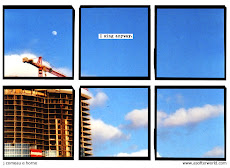Last month, I spent a few days in NYC with Sr. Kathi and a dozen college girls. It was a wrap-up of our two-week service in GR, learning about the issues of homelessness and the roles of various creative non-profits in the area. In New York, we stopped by the United Nations, spoke with a panel of staff from different NGOs, and met an incredible Franciscan sister named Ana.
Sr. Ana has lived on the streets for four years. She collects bottles and cans for the deposit money with a group of homeless folk who call themselves the Canners, or "Sure We Can." She introduced us to a whole host of interesting people, including Eugene, the "King of Cans," who you can meet too, on YouTube.
The sights we went to see may not be the usually tourist destinations, but we did hit up a couple of those too. One afternoon, a few of us wandered over to St. Pat's, and I sat in the back row of the adoration chapel there and prayed in front of the Eucharist, the leftover wafers from communion services. Many Catholics consider this a very meaningful form of prayer, since the Eucharist represents Jesus' body and presence.
The experience, after hearing Sr. Ana speak about her desire to live as a homeless person, to minister to Christ thrown out on the streets, was a strange one for me, and it led me to write the following prayer-poem.
Adoration
Jesus, we break your body
and pour out your suffering
on Sundays.
We recognize you
in the wafer
placed in our hands
or behind golden doors
where I kneel to pray,
to bare my head
and heart
and bottoms of my feet
before your presence
in humility and awe.
But at night,
you unlatch the tiny handle
of those doors and slip,
by ever-glowing candle flame,
to the street corner.
I pass by you in the morning,
my eyes avoiding yours
as you wait in line for breakfast,
my hands shoved deep into pockets
to protect my dollar bills
from your empty coffee can,
my feet stepping easily
over your body,
asleep on the cement.
I turn away from the smell
of wine on your breath,
forgetting the cup I drank from
the day before.
But today, Jesus,
you called my name,
and I recognized you.
You took my hand
and placed my fingers
in the holes of your coat
and shoes
and blankets.
And I saw your face.
Today, Jesus, and every day,
may we fall to our knees
at street corners.
May we be drawn to your presence
on steps and in doorways;
may we sit at your feet
and listen to your story.
May our hearts overflow with joy
at the sight of your face, crying out,
“Immanuel, God with us!
This is the body of Christ.”
Famous Cottage Gardens Daylilies Ideas
2 years ago

